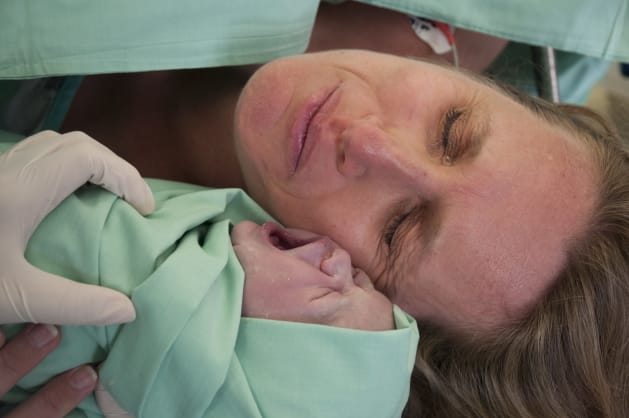Your Body, Your Baby, Your Choice
"Some physicians may not agree with the request because of ethical or medical reasons. But if a patient decides they want to go ahead with the procedure, contrary to the wishes of their doctor, that doctor has a responsibility to refer the patient for a second opinion or transfer care."
"All maternal health care providers need to understand and hear the reasons why some women consider pre-planned caesareans the best option for them. This includes understanding the person's values, fears and concerns."
"But any final decision should not be made until women are equipped with the most up-to-date and evidence-based information to help them make such an important decision about how their baby will be born."
"Each hospital needs to understand the contributing factors to caesarean sections in its population, but the ultimate goal will always be to have a healthy mother and baby."
Dr. Jennifer Blake, chief executive officer, Society of Obstetricians and Gynaecologists of Canada
"We shouldn't as practitioners offer them [caesarean sections], or do them generally, unless there is a medical reason."
"However, there is no doubt that there is a group of patients who, for whatever their own reason, come forward and request a caesarean section without indication. So, what is a practitioner to do with that?"
"There's the perception that this category is increasing. Therefore, we felt we had to have a position on this."
Dr. Jon Barrett, chief of maternal-fetal medicine, Sunnybrook Health Sciences Centre, Toronto
 |
| guter via Getty Images |
Despite controversy and published 'discussions' and professional opinions mitigating against choosing C-sections when they are not indicated by an adverse potential in a normal delivery, women continue to request surgery. Finally, surgeons have done that metaphorical shrug and decided that it is in everyone's best interests in the final analysis, to submit to new mothers' requests. It is, after all, their pregnancy, their birthing time, and little harm comes to either mother or child through that version of childbirth.
The Society of Obstetricians and Gynaecologists of Canada has reversed its previous stance on the issue, with a declaration that as long as a woman has been "fully briefed" on the positive and negative aspects, and remains convinced she wants to proceed with a pre-planned C-section, there should be no resistance from her doctor. Who must respond in agreement or take steps to refer the woman to another doctor who would be willing to perform the surgery.

According to the Canadian Institute for Health Information, more than 103,000 C-sections were conducted last year in Canada. In Canadian hospitals then, C-sections represent the most common "in-patient" surgical procedure, where 28 percent of births took place through C-section. British Columbia had the highest number at 35 percent, and the lowest number was seen in the North-West Territories at 18 percent. No longer does the SOGC claim that absent a medical reason for abdominal surgery over vaginal delivery, C-Sections should not be on offer.
In 2004, the SOGC position was clearly stated: "The Society is concerned that a natural process would be transformed into a surgical process". That professional sentiment has not changed at all, as it happens; the society continues to believe that a medical need should be present to justify a C-section. However, the reality is, women in society have embraced a trend they have no intention of relaxing. It is as though there is no need for a rationale to reflect a rejection of professional best-practise recommendations.
Obstetricians believe in part that older first-time mothers have convinced themselves that this, their first and likely last pregnancy must not be given to chance for success, but that everything that could be done to ensure success must guide their decision-making. There is also the assumed issue of adverse fears of vaginal delivery to attribute the rising rates of C-section preferences. A slight decrease in still-births has been seen in C-sections, along with fewer newborns assailed with breathing problems attributed to oxygen lack at birth.
On the obverse side is the fact that this is surgery being chosen, where the increased risk of severe hemorrhage, cardiac arrest and deep-vein thrombosis can threaten women who have a planned C-section, in comparison to those reliant on vaginal birth. Once a C-section reflects a first pregnancy the following pregnancy may be complicated by the placenta moving through the scar of the C-section, risking bleeding and hysterectomy.
Through C-sections, there are also risks to babies' health, inclusive of potential excess fluid accumulation in the lungs, lacking the vaginal birth passage when lungs are squeezed going through the birth canal, the fluid being released from the lungs. "There's a higher risk of the baby not being able to breathe properly", that might require intensive care, noted Dr. Barrett. On the negative side with vaginal deliveries is the elevated risk of damage to the pelvic floor muscles.
 |
Labels: Bioscience, Childbirth, Surgery

0 Comments:
Post a Comment
<< Home